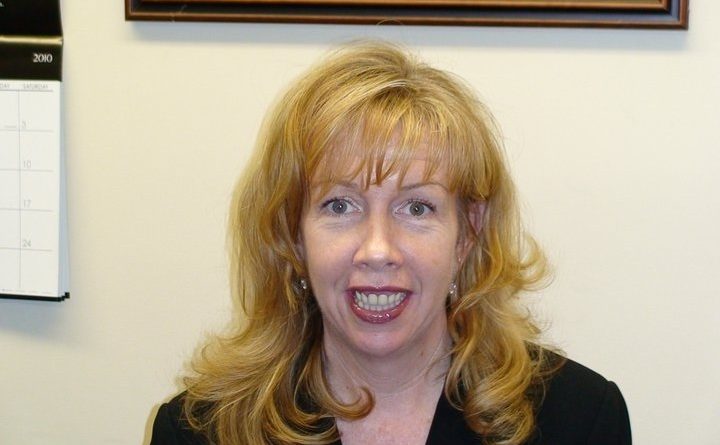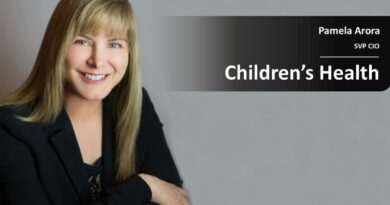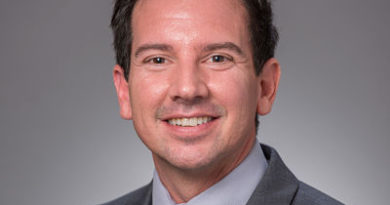Need of Telemedicine: Know the Healthseeker
By Bridget Gallagher, VP, Americare
I have an Aunt, who is 86 years old and provides aide services 4- 5 hours a day to a 94-year-old woman living in her neighborhood. The 94-year-old, who I will call Ethel, is what my Aunt describes as “feeble”; she walks around the apartment with a cane, needs assistance with meal preparation and other activities of daily living. However, Ethel is alert and oriented, or as my Aunt describes it “totally with it”.
Ethel has no children but is in touch with a niece, who lives a distance away but calls frequently and visits monthly. Ethel has communicated to my Aunt that she is financially secure and has not hired “a girl” because she does not really need one and prefers to pay my Aunt “to visit” instead.
Ethel’s niece, in order to give herself peace of mind, insisted that her Aunt accept an “alert pendant”. Ethel’s niece explained that it was very easy to use, and if there was a problem Ethel could hit the button and help would come. Since her niece was paying, Ethel did not want to see the niece’s money wasted so she religiously wears the alert pendant, never removing it.
If you are rolling out technology/Telehealth commit to having several modalities
One night, Ethel gets up to go to the bathroom and falls. It is 2 am, and Ethel cannot get up. Ethel crawls from her bathroom into her living room and asks “Alexa” to call both my Aunt and her niece. When my Aunt arrived and helped Ethel up from the floor she asked Ethel why did not hit the alert button around her neck. Ethel replied that the button would result in a big commotion, and she knew that “Alexa”, which Ethel ordered for herself on her computer, would not make a big deal out of the incident.
Technology and elder care still struggle with synergy, and Ethel’s story resonates with me as part of our hurdle. I had been a Home Care Nurse for over 25 years and had implemented different modalities of Telehealth with the Medicare population, the Medicaid population as well as private pay. In that time frame there, I learned few lessons that I am more than happy to share.
Lesson #1: There is not one modality that will connect with all your elders. We know that there is a multitude of technologies to help you achieve your health goals: For example, Apps, wearable devices, and exercise webinars. Yet for some reason, at a certain age, we seem to think one modality will work for everyone. Once you hit 75, everyone should get an “alert pendant” for example. That modality works very well for some, not for the Ethels of the world. If you are rolling out technology/Telehealth commit to having several modalities. Some people will be very receptive to Medication Dispensers, others to Interactive Monitors, while rest to Applications. Trying to oversimplify will limit adaption.
Lesson #2: People, and this includes older people, do not always do things because it is good for them. Otherwise, we would all be exercising a minimum of 30 minutes a day. Telling an older person to use a technology because it will avoid a hospitalization or will keep them healthy is not always the right motivation. It is imperative to find out what the older person’s goals are in order to impact on utilization. Some people will say “I would like a reminder for my medications”, others will say “I would like a call if I am not feeling well”. Determining the elder’s motivation will have a significant impact on utilization.
Lesson #3: No one likes to have their decision-making ability limited, and older people are particularly sensitive to that danger. Ethel’s niece was right on target that Ethel needed to be connected to avoid being stranded in an emergency. But 911 and an ER trip was clearly not Ethel’s goal. If Ethel had not had Alexa there is a high probability she would have waited for my Aunt to arrive at her designated time versus hitting the alert button. Now, alert pendants can be utilized to function just like “Alexa”, but that needs to be established in advance. Older people, like all of us, want to make sure they control their own destiny. If the technology is perceived as “reporting” and then “resulting in undesirable consequences”, the older person will not use it. Utilization will increase if the older person is assured that an alert will trigger a call to them, to discuss next steps. I had a Telehealth patient who shared that the unit would have to go if her daughter had access to her data. The patient already knew she had to lose weight but having the daughter call after each weighs in was driving the patient insane.
Lesson #4: Avoid data overload, for both you and your patients. There are amazing technologies today: sensors that alert you if someone has not opened their refrigerator or moved off the couch all day, wearable devices that will send all sorts of biometric data, interactive devices that can identify a multitude of early decompensation symptoms. The risk is not to overload the user and your own backend with data. Just because you can get the data does not mean you want it. Identify what your global goal is and choose your data points carefully. The average Telehealth user will spend 8-10 minutes using the device. That is it, so be cognizant of the time required when you are designing your program. Older people have lives too and do not want to “feel sick” by having to use a unit every day for an extended period of time. Then you have to decide what your team will focus on as a “red alert”, something that requires follow up. If you “Red Alert” everything, you will wind up responding to nothing, and the first missed crisis will result in a non-user ever after.
Designing our technology programs with the goals of the older person in mind is an important first step.



